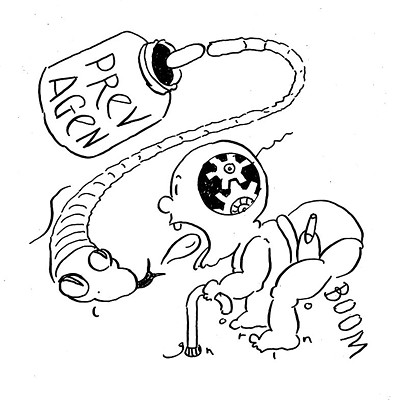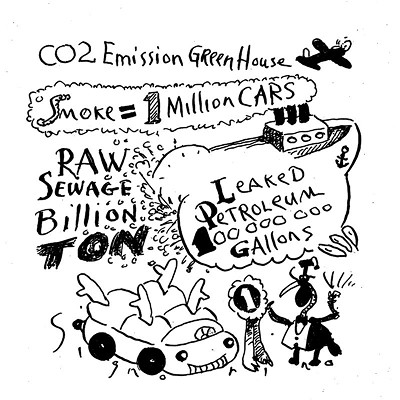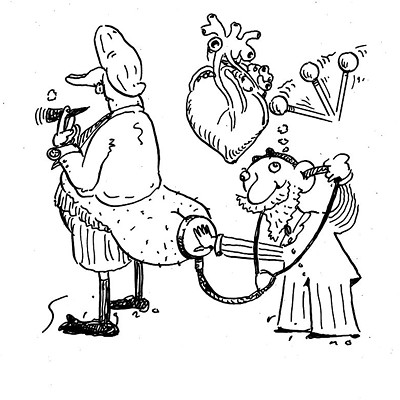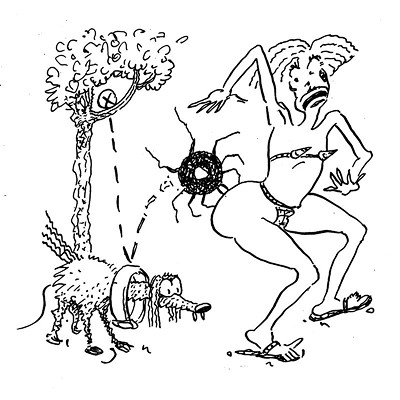My friend Melanie loves to watch the Discovery Channel and share what she has watched with others. The problem is she can never get the story straight. Her latest tale is about Yellowstone Park sitting on top of a supervolcano that has been dormant for 6,000-ish years. She said the supervolcano is showing signs its active. Is there any truth to her tale?
—Tina
Yeah, Melanie screwed up some details: it’s been 600,000-ish years since Yellowstone’s supervolcano has gone off full blast, not 6,000. She got the drift, though. It’s a question of when, not if.
A supervolcano is one that explodes in (natch) supereruptions. Definitions vary, but usually we’re talking a magnitude-eight (M8) eruption: one trillion metric tons of ash and other debris filling at least 100 cubic miles, typically upchucked over the course of about a week. Picture 1,000 Mount Saint Helenses, or 8 Tamboras. Besides causing regional devastation, supereruptions affect global climate. An Indonesian super 74,000 years ago kicked off a thousand-year drought that some contend caused a human population crash.
Yellowstone is both a supervolcano and a hotspot; the two don’t always go together. A hotspot is the business end of what’s known as a mantle plume, a stream of magma that rises hundreds of miles through a channel in the earth’s crust. The Yellowstone plume head, 50 miles underground, is several hundred miles wide. Over time, the hot head melts the overlying crust, forming a smaller magma chamber. Yellowstone’s magma chamber is just a few miles down and contains partially melted granite viscous enough to trap gas, allowing pressure to build. Periodically the pressure cracks the surface, ejecting gas and disintegrated rock into the surface world. After about a tenth of the chamber’s contents have erupted, pressure falls and the show’s over. Reheat and repeat.
The Yellowstone hotspot has produced dozens of large eruptions over the past 16 million years, the last three within the Yellowstone volcanic field: two supers and one M7.4 lightweight that created 68 cubic miles of debris. They left overlapping giant calderas, or craters, each 10 to 50 miles wide. Since filled with lava and eroded, the calderas went unrecognized till the 1960s.
These three big eruptions were 640,000 years ago, 660,000 years earlier, and 800,000 years before that. See a pattern? Lurid reports suggest we’re overdue, but the pattern is illusory. Over the past 4.5 million years, large Yellowstone eruptions have come at irregular intervals of 300,000 to 2.4 million years. Furthermore, a series of smaller eruptions (relatively; one was Krakatoa-esque in magnitude) between 170,000 and 70,000 years ago ejected as much material as a super—perhaps enough to relieve the pressure for a while.
Yellowstone has been eruption-free for 70,000 years, neglecting occasional steam explosions. Two centers of resurgence within the last caldera, where the land heaves up and down several feet over the course of decades, bear watching, but there’s no sign of imminent trouble.
What’s the chance of a supereruption anywhere in the world in the next 50 years? Estimates range from one chance in 1,000 to one in 10,000—hardly cause for panic. When it does happen, though, a lot of people are going to be toast. A supereruption could kill tens of millions. Within 10 to 50 miles of the next Yellowstone vent, you’ll be Pompeiiized beneath thousands of feet of hot ash. Ash and associated toxins could devegetate a third of the lower 48 (including some of the world’s most productive farmland) for years or decades, leading to mass starvation.
Grim, but so unlikely that the U.S. Geological Survey lists Yellowstone as only the 19th most dangerous American volcano. Pimples like Kilueha, Saint Helens, and Rainier top the list.
Elsewhere, some giant calderas are frightfully close to urban areas. Lake Taal in the Philippines is only 40 miles from Manila. In Italy the rim of Campi Flegrei lies only five miles from central Naples. The last near-supereruption there came 35,000 years ago; a much smaller one killed 24 in 1538. Pizza napoletana on my next Italian tour? Sure. But make mine to go.
Comments, questions? Take it up with Cecil at straightdope.com. or write him at the Chicago Reader, 11 E. Illinois, Chicago 60611. Cecil's most recent compendium of knowledge,Triumph of the Straight Dope, is available at bookstores everywhere.
























